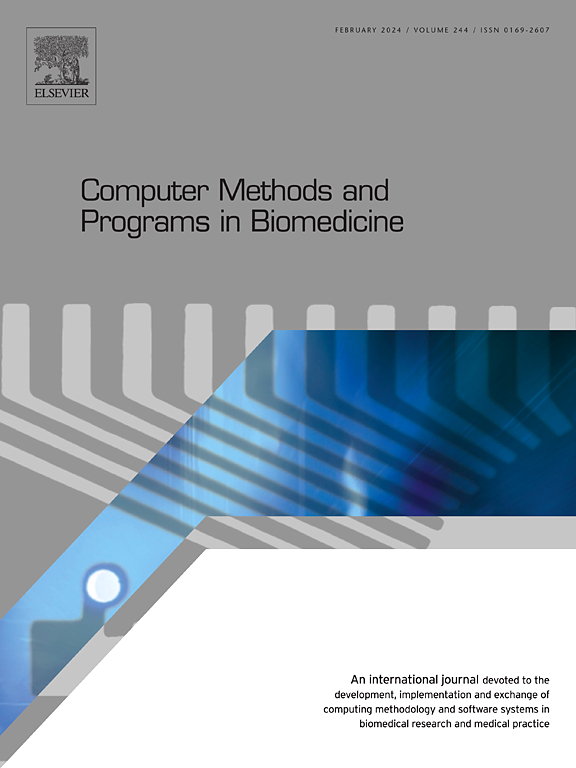Cross-modal alignment and contrastive learning for enhanced cancer survival prediction
IF 4.9
2区 医学
Q1 COMPUTER SCIENCE, INTERDISCIPLINARY APPLICATIONS
引用次数: 0
Abstract
Background and Objective:
Integrating multimodal data, such as pathology images and genomics, is crucial for understanding cancer heterogeneity, personalized treatment complexity, and enhancing survival prediction. However, most current prognostic methods are limited to a single domain of histopathology or genomics, inevitably reducing their potential for accurate patient outcome prediction. Despite advancements in the concurrent analysis of pathology and genomic data, existing approaches inadequately address the intricate intermodal relationships.
Methods:
This paper introduces the CPathomic method for multimodal data-based survival prediction. By leveraging whole slide pathology images to guide local pathological features, the method effectively mitigates significant intermodal differences through a cross-modal representational contrastive learning module. Furthermore, it facilitates interactive learning between different modalities through cross-modal and gated attention modules.
Results:
The extensive experiments on five public TCGA datasets demonstrate that CPathomic framework effectively bridges modality gaps, consistently outperforming alternative multimodal survival prediction methods.
Conclusion:
The model we propose, CPathomic, unveils the potential of contrastive learning and cross-modal attention in the representation and fusion of multimodal data, enhancing the performance of patient survival prediction.
求助全文
约1分钟内获得全文
求助全文
来源期刊

Computer methods and programs in biomedicine
工程技术-工程:生物医学
CiteScore
12.30
自引率
6.60%
发文量
601
审稿时长
135 days
期刊介绍:
To encourage the development of formal computing methods, and their application in biomedical research and medical practice, by illustration of fundamental principles in biomedical informatics research; to stimulate basic research into application software design; to report the state of research of biomedical information processing projects; to report new computer methodologies applied in biomedical areas; the eventual distribution of demonstrable software to avoid duplication of effort; to provide a forum for discussion and improvement of existing software; to optimize contact between national organizations and regional user groups by promoting an international exchange of information on formal methods, standards and software in biomedicine.
Computer Methods and Programs in Biomedicine covers computing methodology and software systems derived from computing science for implementation in all aspects of biomedical research and medical practice. It is designed to serve: biochemists; biologists; geneticists; immunologists; neuroscientists; pharmacologists; toxicologists; clinicians; epidemiologists; psychiatrists; psychologists; cardiologists; chemists; (radio)physicists; computer scientists; programmers and systems analysts; biomedical, clinical, electrical and other engineers; teachers of medical informatics and users of educational software.
 求助内容:
求助内容: 应助结果提醒方式:
应助结果提醒方式:


